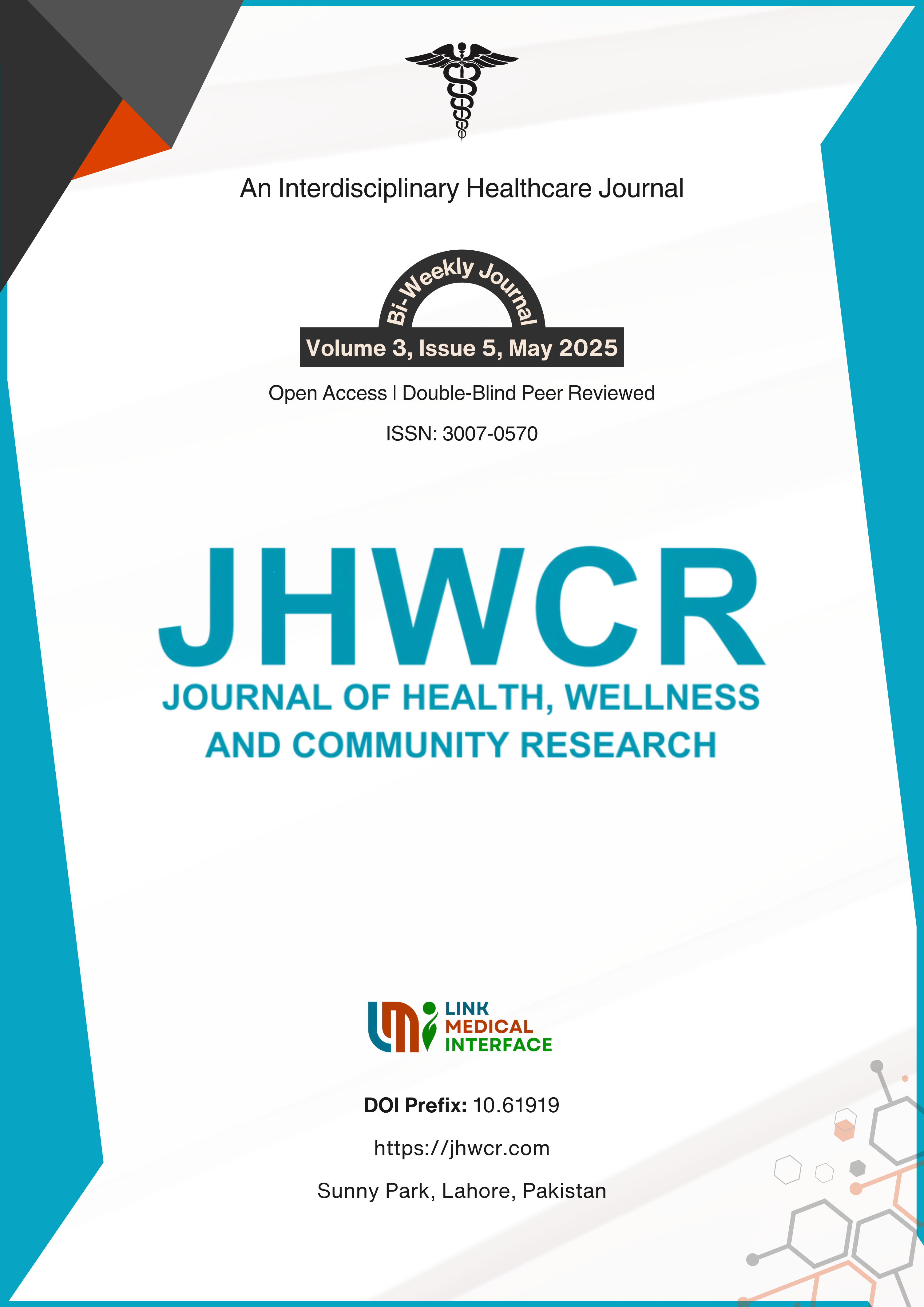Prevalence of Plantar Fasciitis in Construction Workers of Lahore Standing More Than 8 Hours
DOI:
https://doi.org/10.61919/g9pjf259Keywords:
Plantar Fasciitis, Construction Workers, Occupational Health, Prevalence, Prolonged Standing, Heel Pain, ErgonomicsAbstract
Background: Plantar fasciitis is a prevalent source of heel pain and functional impairment among adults engaged in physically demanding occupations. Construction workers are at increased risk due to prolonged standing and inadequate footwear, yet limited local data exist to guide targeted interventions. Objective: This study aimed to determine the prevalence of plantar fasciitis and its associated pain severity and functional limitations among construction workers in Lahore who stand for over eight hours daily, providing insight into occupational risk and healthcare needs. Methods: A cross-sectional observational study was conducted among construction workers (n = 166) aged 20–60 years from various sites in Lahore. Inclusion required at least one year of employment, regular standing >8 hours daily, and absence of prior plantar fasciitis treatment or use of custom orthotics. Data were collected using standardized questionnaires, Visual Analogue Scale (VAS), Foot Function Index (FFI), and Windlass test. The primary outcome was plantar fasciitis prevalence; secondary outcomes included pain intensity and functional disability. Ethical approval was granted by the Institutional Review Board of the University of Lahore in accordance with the Helsinki Declaration. Statistical analyses, including descriptive and inferential methods, were performed using SPSS v27. Results: Plantar fasciitis prevalence was 29.5% as confirmed by Windlass test, with 51.2% reporting heel pain and a mean FFI score indicating moderate functional limitation (mean ± SD: 62.31 ± 49.92). Pain severity was significantly associated with standing duration and footwear type (p < 0.05). Conclusion: Plantar fasciitis is a significant occupational health issue among construction workers with prolonged standing, leading to moderate pain and functional impairment. Targeted ergonomic interventions and improved workplace footwear are warranted to mitigate risk and enhance worker
Downloads
Published
Issue
Section
License
Copyright (c) 2025 Journal of Health, Wellness and Community Research

This work is licensed under a Creative Commons Attribution 4.0 International License.


